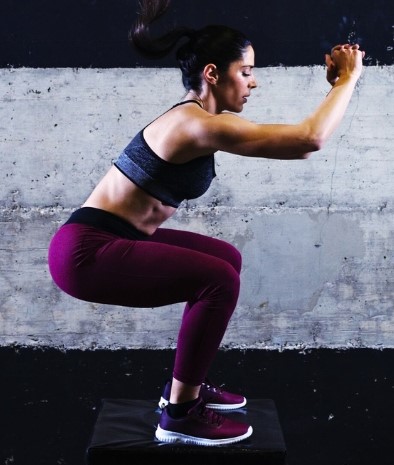
The Truth About ACL Injuries: Everything You Need To Know
ACL injuries are one of the most common and serious knee injuries.
They often take a long time to heal, keeping you out of action for months and impacting your ability to move and enjoy daily activities.
The good news? ACL injuries can be prevented—and with the right approach, you can protect your knees for the long run.
Let’s Discuss:
- Primary Prevention: How to reduce ACL injury risk with programs like FIFA 11+.
- Strengthening Your Knees: The importance of strength training to protect your knees.
- Return to Sport: How to safely return to activity using criteria-based testing.
- Physical Therapy: Why working with a sports-specific physical therapist is key to recovery.
What is an ACL Injury?
Let’s first take a quick look at what an ACL injury actually is.
The ACL is one of the main ligaments in your knee.
- It helps stabilize your knee and keeps it functioning properly when you pivot, jump, or land.
- When the ACL is torn—usually during high-impact activities or sports that require sudden stops, twists, or jumps—it can be devastating, both physically and emotionally.
- ACL injuries typically require surgery and a lot of rehab.
Here’s the thing: preventing ACL injuries is much easier than recovering from one.
And if you’ve had an ACL injury before, preventing re-tears is just as important.
Prevent ACL Injuries Before They Strike
First and foremost, let’s talk about how to prevent an ACL injury in the first place.
— FIFA 11+: A Simple Program to Help Prevent ACL Injuries
One of the best ways to prevent ACL injuries is by using a proven injury prevention program.
Enter the FIFA 11+ Injury Prevention Program, a warm-up program developed for soccer players but is incredibly effective for athletes of all kinds.
The exercises in the FIFA 11+ program focus on improving strength, flexibility, and neuromuscular control—everything your knees need to stay safe.
Here’s what the FIFA 11+ program focuses on:
- Strengthening exercises for the muscles around your knee, like the quads, hamstrings, and calves.
- Agility drills to improve your balance, coordination, and movement efficiency.
- Stretching routines to increase flexibility in the muscles around the knee and hip, reducing strain on the joint.
By incorporating these exercises into your warm-up routine, you can reduce your risk of ACL injuries and enhance your overall performance.
Best of all, the FIFA 11+ program only takes about 15-20 minutes to complete, so it’s easy to add into your regular warm-up routine before practices or games.
— Strength Training: Build Strong Knees for Better Protection
In addition to the FIFA 11+ program, strength training is one of the best ways to prevent ACL injuries.
Building muscle around your knee joint gives it extra protection.
Think of your muscles as your knee’s “armor.”
- Targeting the muscles around your knee with exercises like squats, lunges, and leg presses strengthens the joint, providing greater protection.
- Strengthening your glutes and core is equally important, as these muscles play a significant role in stabilizing your body during dynamic movements like running and cutting.
Returning to Sport: Why Your ACL Recovery Isn’t Enough
Now, let’s say you’ve already had an ACL injury and you’re recovering.
Returning to sports too soon or without proper testing can set you up for a re-tear—or worse, an injury to your other knee.
— Why Does This Happen?
- A lot of athletes who return to sport too soon after an ACL injury end up re-tearing their ACL or injuring their other knee.
- In fact, studies show that athletes are 7 times more likely to re-tear their ACL if they return to their sport before 9 months of rehab.
Your knee may look healed, but it may not be ready to handle the demands of sport.
If you don’t give it the time and attention it needs during rehab, you’re at a much higher risk of re-injury.
— ACL Return to Sport Testing: The Key to Safe Recovery
Here’s where ACL return to sport testing comes in.
- This is a set of tests that measure your knee’s strength, mobility, and ability to perform sport-specific movements.
- These tests help determine if your knee is truly ready to handle the physical demands of your sport.
Timeline-Based Testing vs. Criteria-Based Testing
Many athletes are told they can progress to the next phase of rehab, such as returning to running, simply because they’ve reached a certain timeframe—say 12 weeks—without actually testing whether the knee is capable of this activity.
This is called timeline-based testing, and isn’t the most effective way to determine readiness to progress. Progressing your rehab into more advanced phases before your knee is truly ready might set you up for increased pain, swelling, and compensations—your body’s way of cheating around deficits.
Instead, criteria-based testing is a much safer and more effective way to determine if you’re ready to return.
This means your physical therapist will assess your knee based on specific functional criteria—such as strength, hop tests, and movement mechanics—before allowing you to return to sport.
Your knee needs to meet specific goals before it can safely tolerate the stress of running, cutting, or jumping.
Common Tests Include:
- Strength tests: Measuring how much strength your injured leg has compared to your uninjured leg is crucial. You should aim for at least 90% strength in your injured knee before returning to sport. Additionally, it’s important to ensure that your strength is comparable to others in your age group, gender, and sport.
- Hop tests: Testing how far or how high you can jump and land in different directions can be a good indicator of whether you are able to produce the force needed to make explosive, sport-specific movements. This helps evaluate your knee’s strength, stability, and readiness for the demands of your sport.
- Movement mechanics: Making sure you’re not compensating with other parts of your body and that you can land and pivot properly.
These tests are crucial because they ensure that your knee is truly ready to perform without putting you at risk of further injury.

The Vital Role of a Sports Physical Therapist
When recovering from an ACL injury and preventing future ones, working with a physical therapist who specializes in sports and/or ACL injuries is essential.
Sports-specific physical therapists have extensive experience in treating ACL injuries and can guide you through a rehab program that’s tailored to your sport, needs, and goals.
How a Specialized Physical Therapist Helps:
- They design personalized rehab plans based on your sport and recovery goals.
- They understand sports-specific movements and how to help your knee adapt.
- They ensure you meet the necessary return-to-sport criteria to prevent further injuries.
When you work with a sports PT who understands the complexity of ACL recovery, you’re setting yourself up for a safer, faster, and more successful return to sport.
Take Charge Of Your Health Today
Preventing ACL injuries is all about being proactive.
Your knees are too important to leave anything to chance—let’s work together to keep them strong, healthy, and injury-free.
If you’re recovering from an ACL injury, or just want to prevent one, reach out today and let’s get started on keeping you at your best!

















